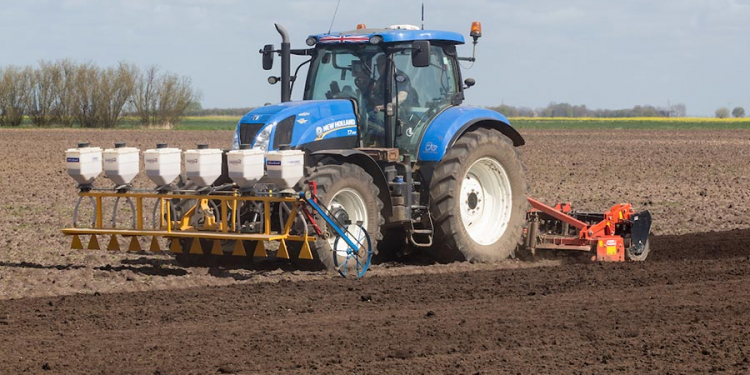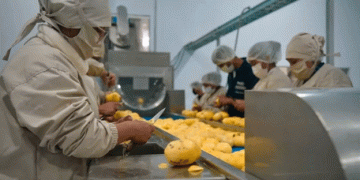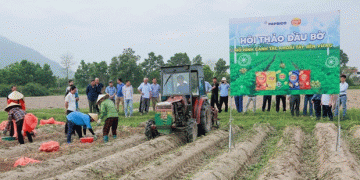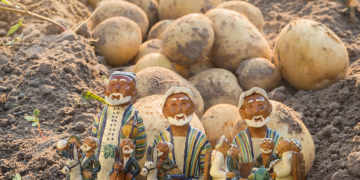Due to the warmer seasons in recent years, arable farmers are more often bothered by pest wireworms. Due to the higher temperatures, more generational build-up of the damaged animals takes place.
That’s what advisor Christoffel den Herder of Ceres Horti Advice stated last week during an online meeting during the Organic Knowledge Week. ‘Warm and wet winters do have a positive effect on population decline,’ he says. ‘Pupating animals and eggs are then affected by fungi.’
In the webinar, leatherettes, wireworms, root centipedes and springtails were mainly mentioned as troublesome pests. For example, the carrot centipede caused a lot of damage in onion cultivation last season.
quick animal
The carrot centipede is a fast creature and therefore difficult to tackle. The insect lives on organic matter and grass-clover in particular has an environment in which the insect can establish itself well. Onions and carrots are especially sensitive as follow-on fruits.
“Primed seed and restricting freedom of movement counteract the nuisance” CHRISTOFFEL DEN HERDER, ADVISOR AT CERES HORTI ADVICE
Den Herder reports that leatherettes have also caused damage in onions in recent years. ‘In the absence of other food, they even eat young plants.’
Perennial Grass Clover
The consultant has the impression that perennial grass-clover in particular gives rise to the larvae of the crane fly. He therefore recommends weeding after each cut. This would help against weeds and egg deposits.
‘Although that is difficult, because the grass must be allowed to grow. What also seems to have an effect is to work the soil intensively with a hook cultivator before plowing. Then you have active destruction of larvae in the top layer. It also helps to let the layer dry out. Emelts then go deeper into the soil.’
Long life cycle
According to Den Herder, less concrete measures can be taken against wireworms. ‘The long life cycle is difficult for wire ropes. Growers can suffer from this for years in the construction plan.’
Damage usually occurs at the end of cultivation. That is why the advisor argues in favor of lifting potatoes quickly after killing them and paying close attention to the drought in the soil. ‘When the foliage is folded, the ridges dry up and the wireworms begin to eat.
Looking for moisture
Wire needles are always looking for moisture. They are not only an increasing problem in potatoes. It also plays in pumpkins, corn and onions. Den Herder also mentions the problem of the springtail and carrot centipede. Due to corridors and cavities in heavy soils, this is especially an issue there. ‘The more freedom of movement, the bigger the problem. They cause the greatest damage in the germination stage.’
The consultant points out a number of important measures. ‘Make sure you grow away quickly. That means early and shallow sowing, preferably at a low soil temperature. Then they are less active. Primed seed and restricting freedom of movement also counteract the nuisance. They are not capable of making gaits themselves.’

Bio knowledge week online
The Bioknowledge Week is organized annually by Bionext. This time, like last year, the event took place entirely online from January 10-13. The interest group is supported by three associations: Biohuis (farmers and horticulturists), BioNederland (producers and trade) and the Biowinkelvereniging (organic shops). Together they aim to maximize the power of the chain. Bionext has a lot of in-house knowledge in the field of organic agriculture and food in the Netherlands. During the Organic Knowledge Week, dozens of organic entrepreneurs, organizations and specialists climbed the digital stage. With more than 110 webinars, it was sometimes difficult to choose between the diverse range of workshops, lectures and presentations.

Growers of ware potatoes suffered from wireworm feeding last year and later damage from snails. The wire rope problem is increasing. Performing a spray at the right time is important. The damage caused by snails can also be extensive.
- What are wire ropes? Wireworms or copperworms are the larvae of the click beetle. The wire-wire lays its eggs in grains and grasses in the months of May, June and July. The larvae can remain in the soil for up to five years and are therefore difficult to control. The larvae pupate around August. In the spring the wireworms become active and come up.
- What is the damage? Mesh needles are an increasing problem in the cultivation of potatoes. They cause damage to the roots and make holes in the tubers. The degradation of quality causes financial damage. The loss of chemical crop protection products can increase that damage.
- How can damage be prevented? Wire needle damage can be controlled by preventing the click beetle from laying eggs. Measuring is knowing. This is necessary to carry out a spraying at the right time. Males can be entrapped and counted with a pheromone. In this way the right moment of spraying can be determined. Spraying against wireworms should be done in dark weather or in the evening.
- What resources can growers use? Nemathorin is a crop protection agent to tackle wireworms and various nematodes. Nemathorin can be used in full fields (20 kilos per hectare) and also in a row (7.5 kilos per hectare). Apply Nemathorin only to potatoes with a precocity rating of 8 or higher. The other products are Force (16 kilos in a row) and Tercol (25 to 30 kilos in a row followed by two or three times 10 liters over the crop). The incorporation of at least 350 kilos of lime nitrogen shows a varying effect.
- And which remedies for snails? Several types of snails cause damage to ware potatoes, not only in the field, but also in the storage cell. The damage can therefore be extensive. The snails are often active between 0 and 25 degrees Celsius and have many chances of survival. The right time to scatter slug pellets is when the snails are busy multiplying.







